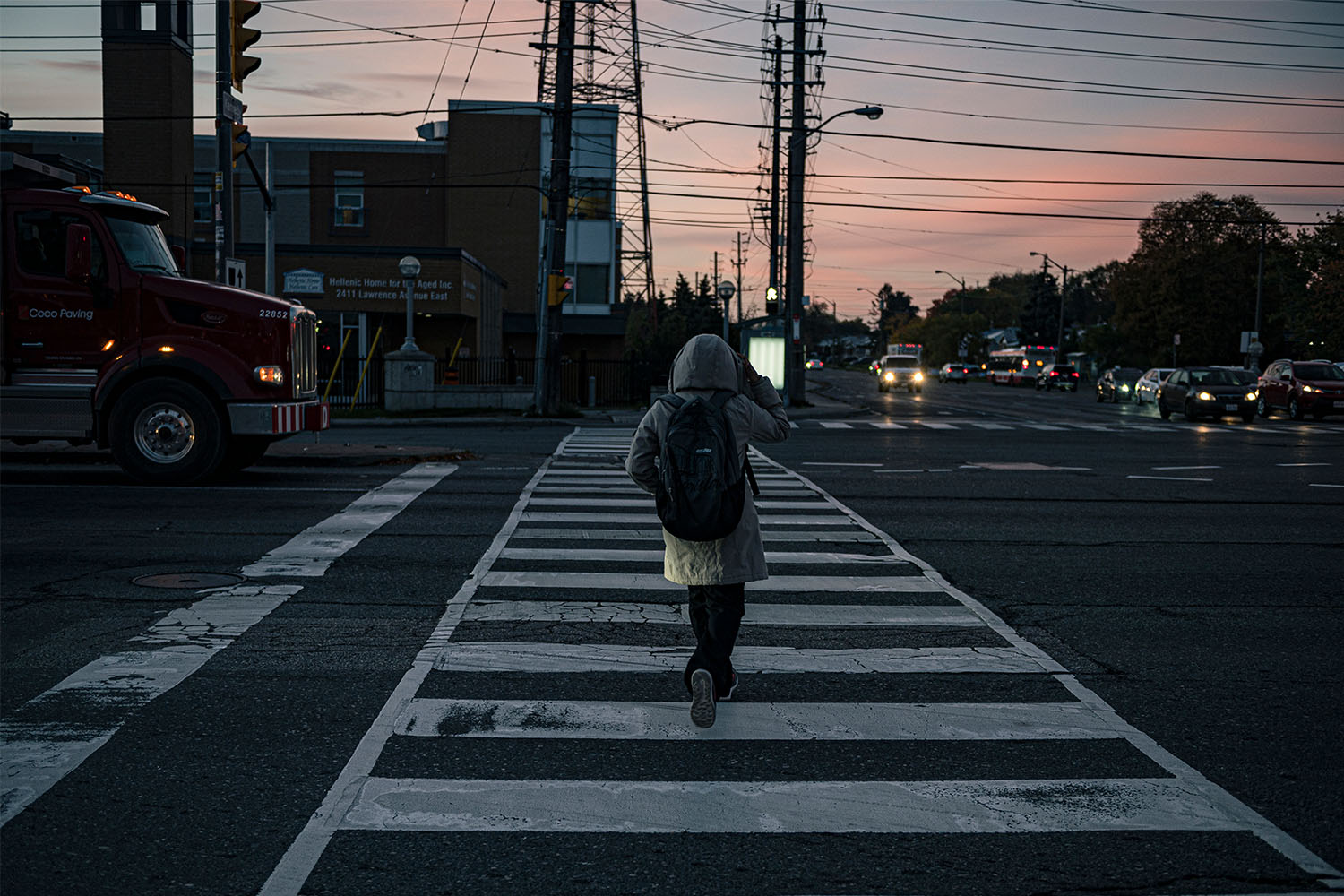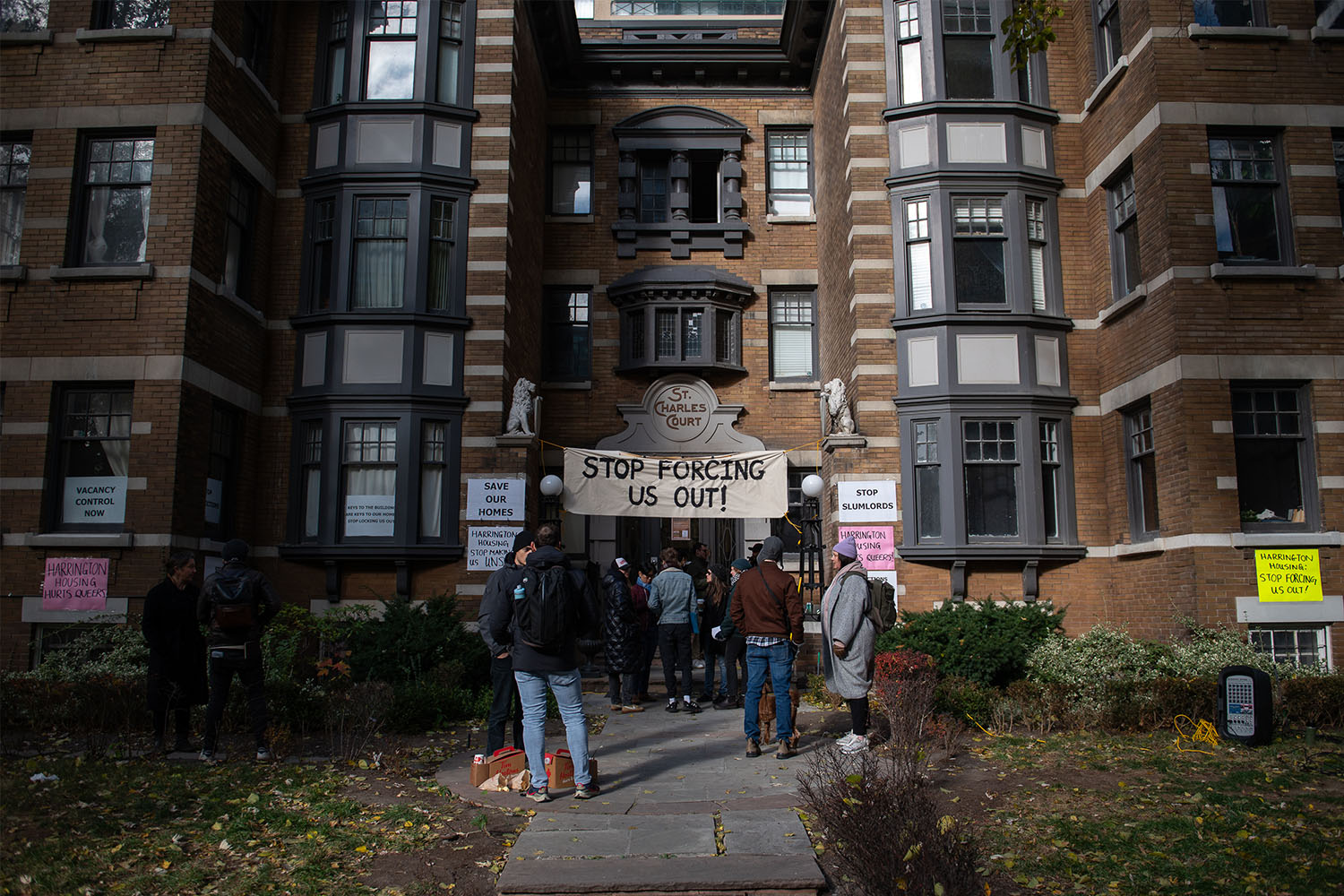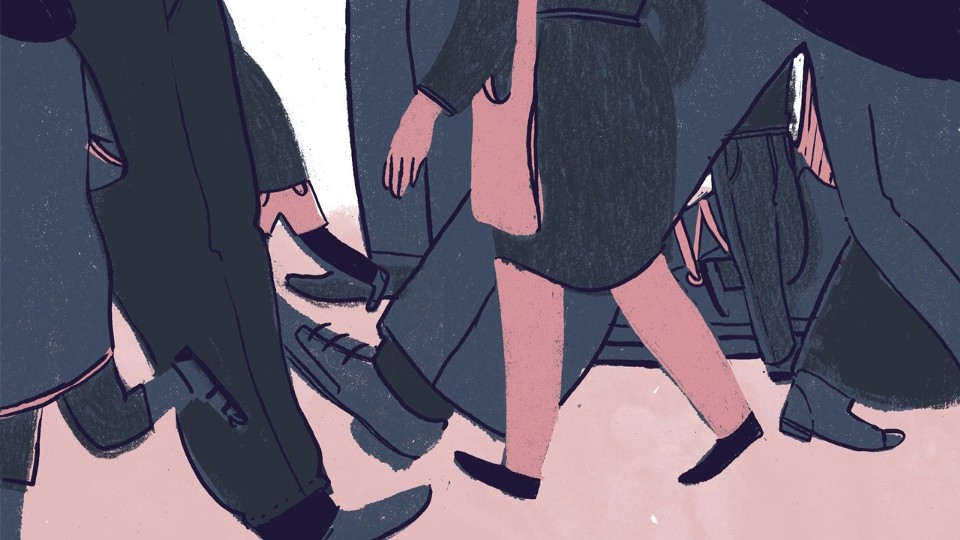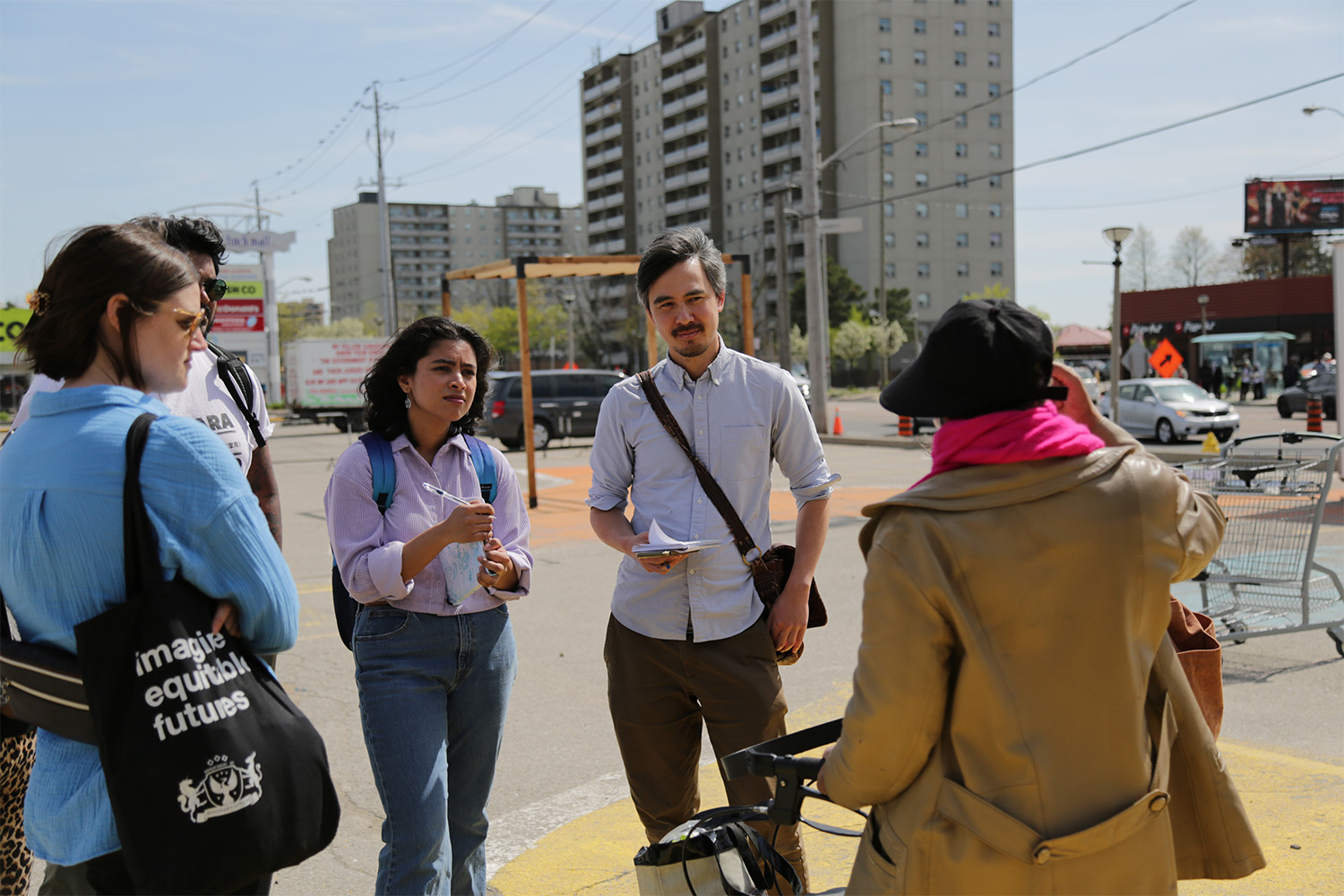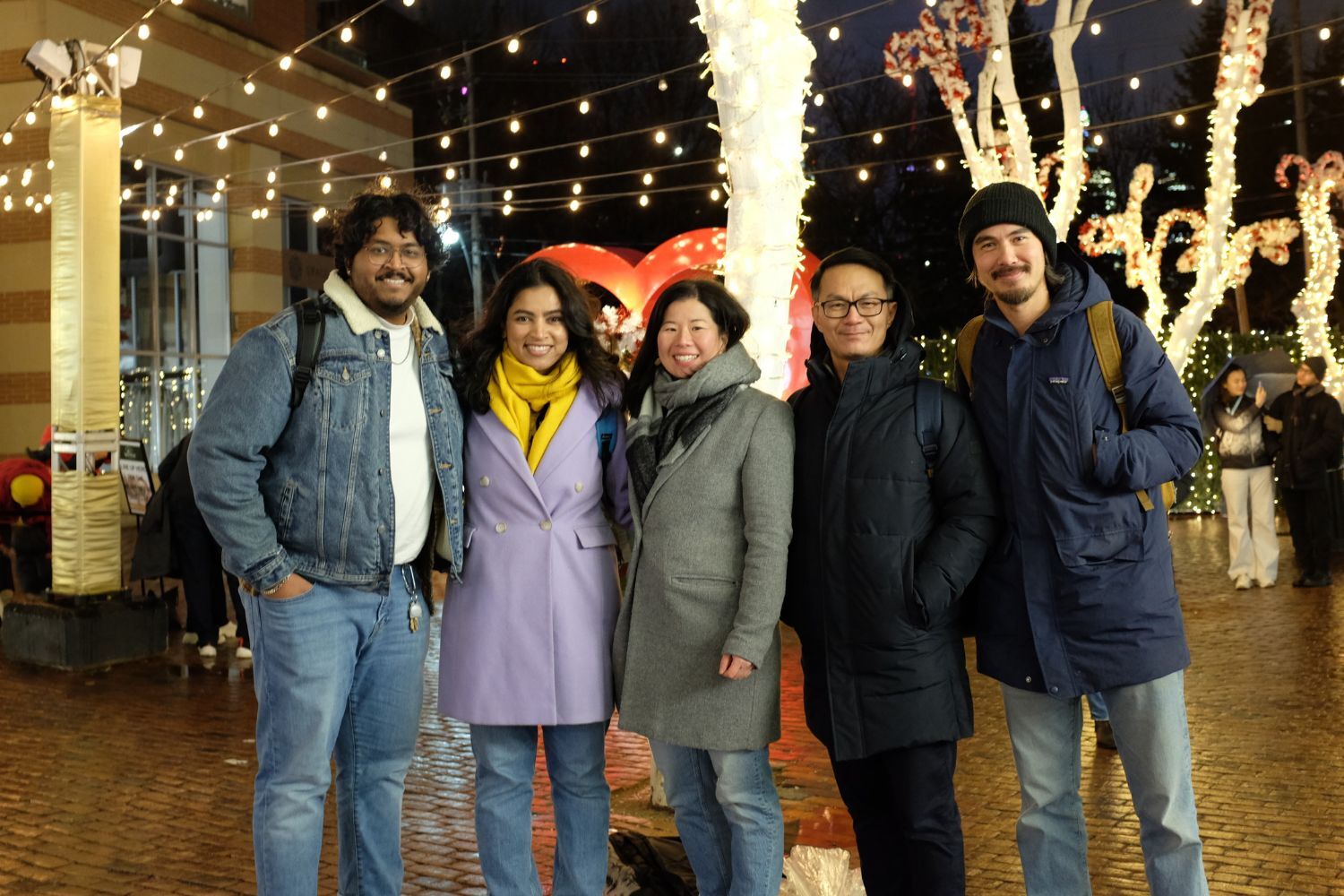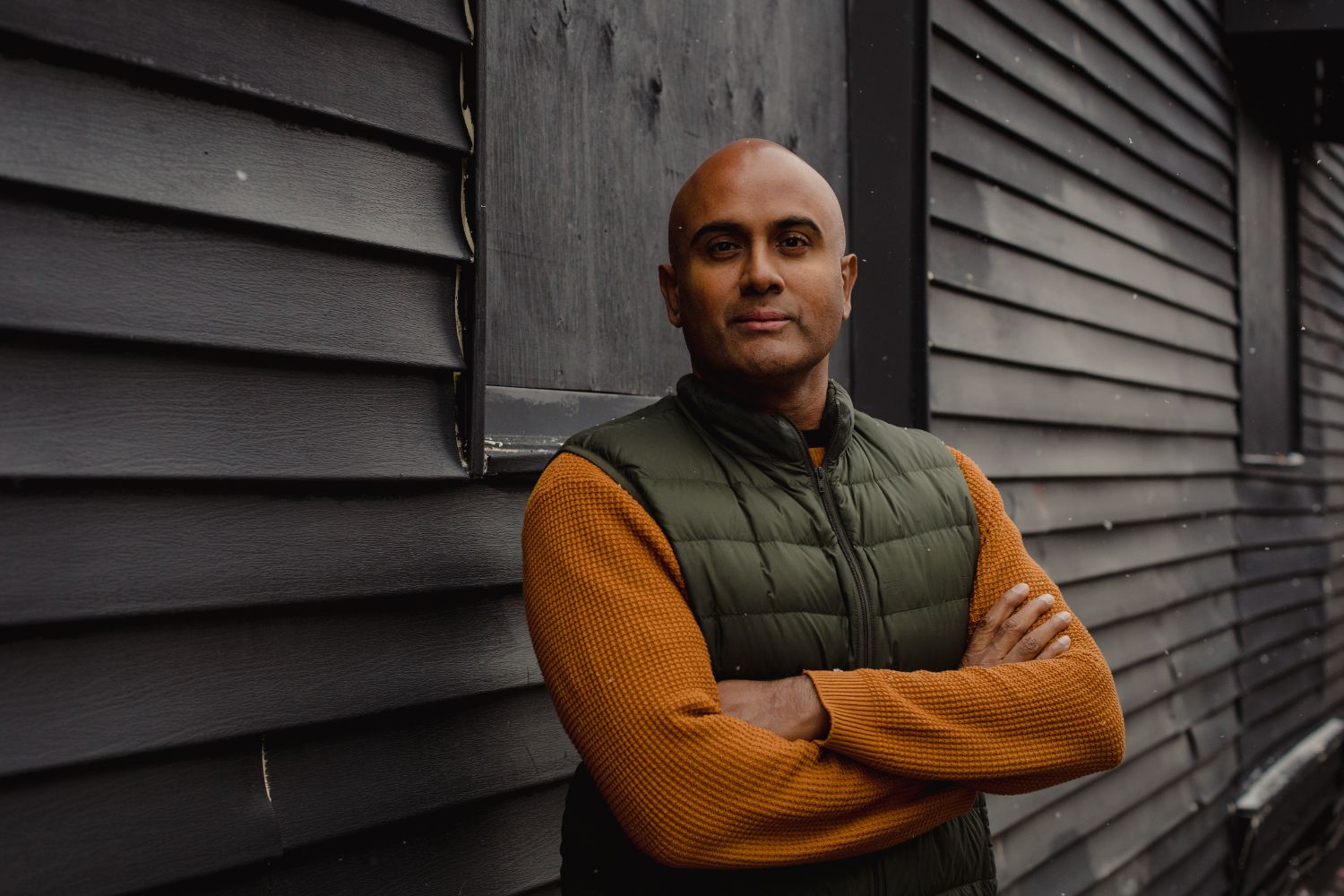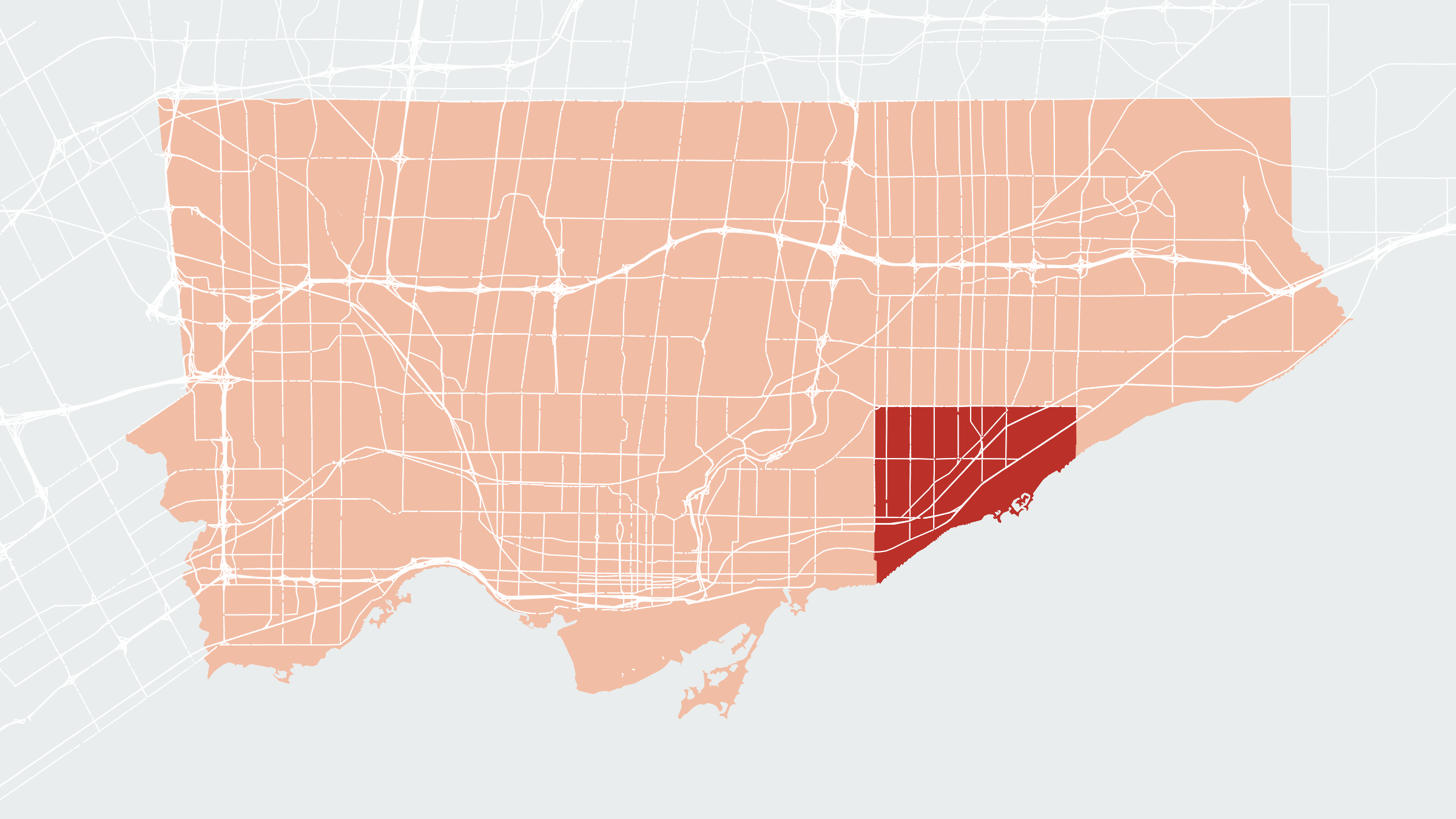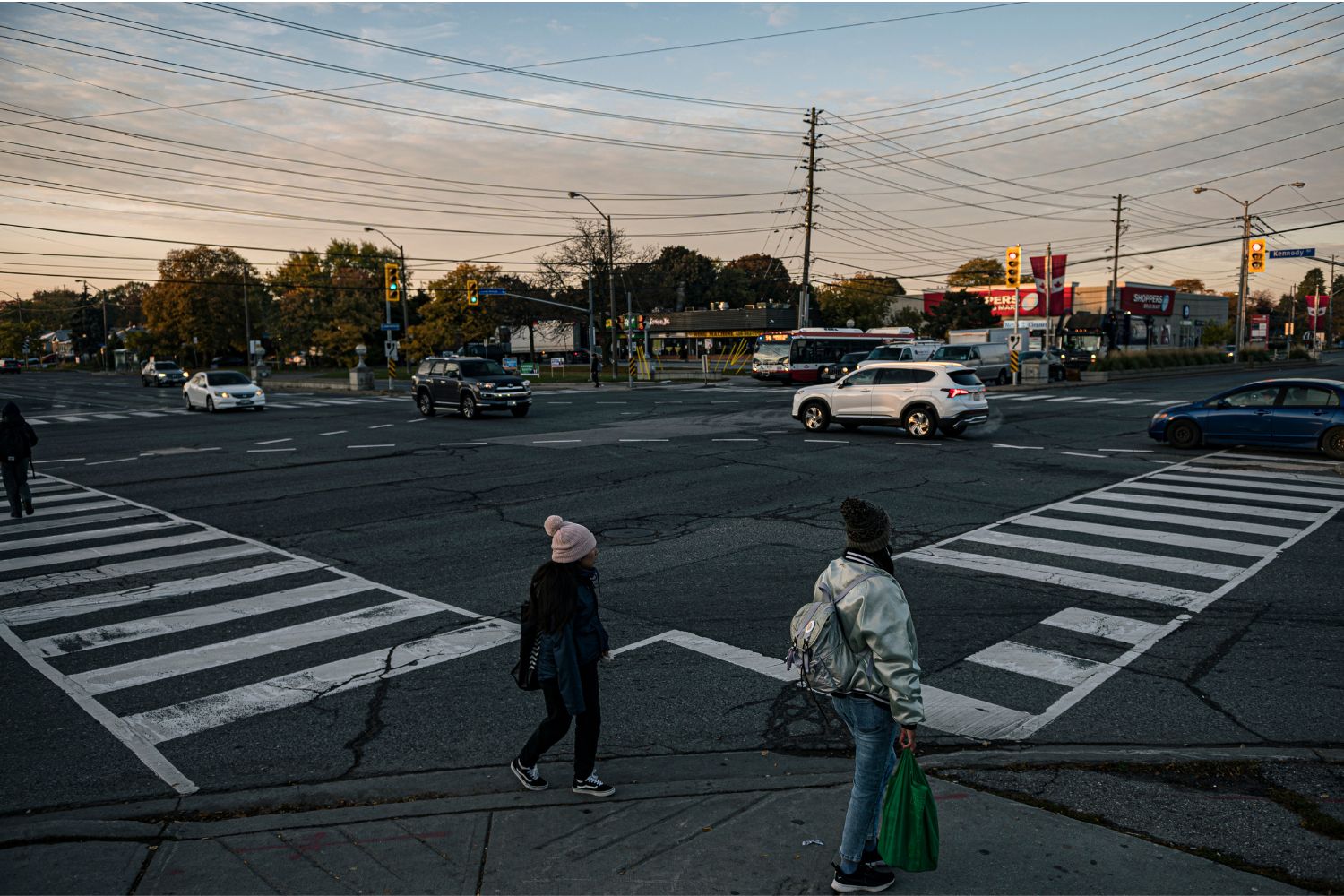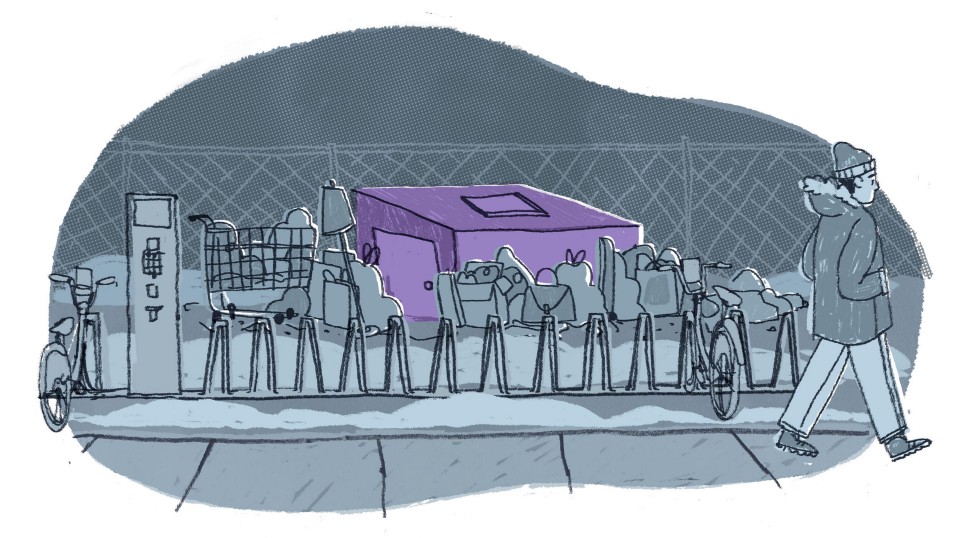
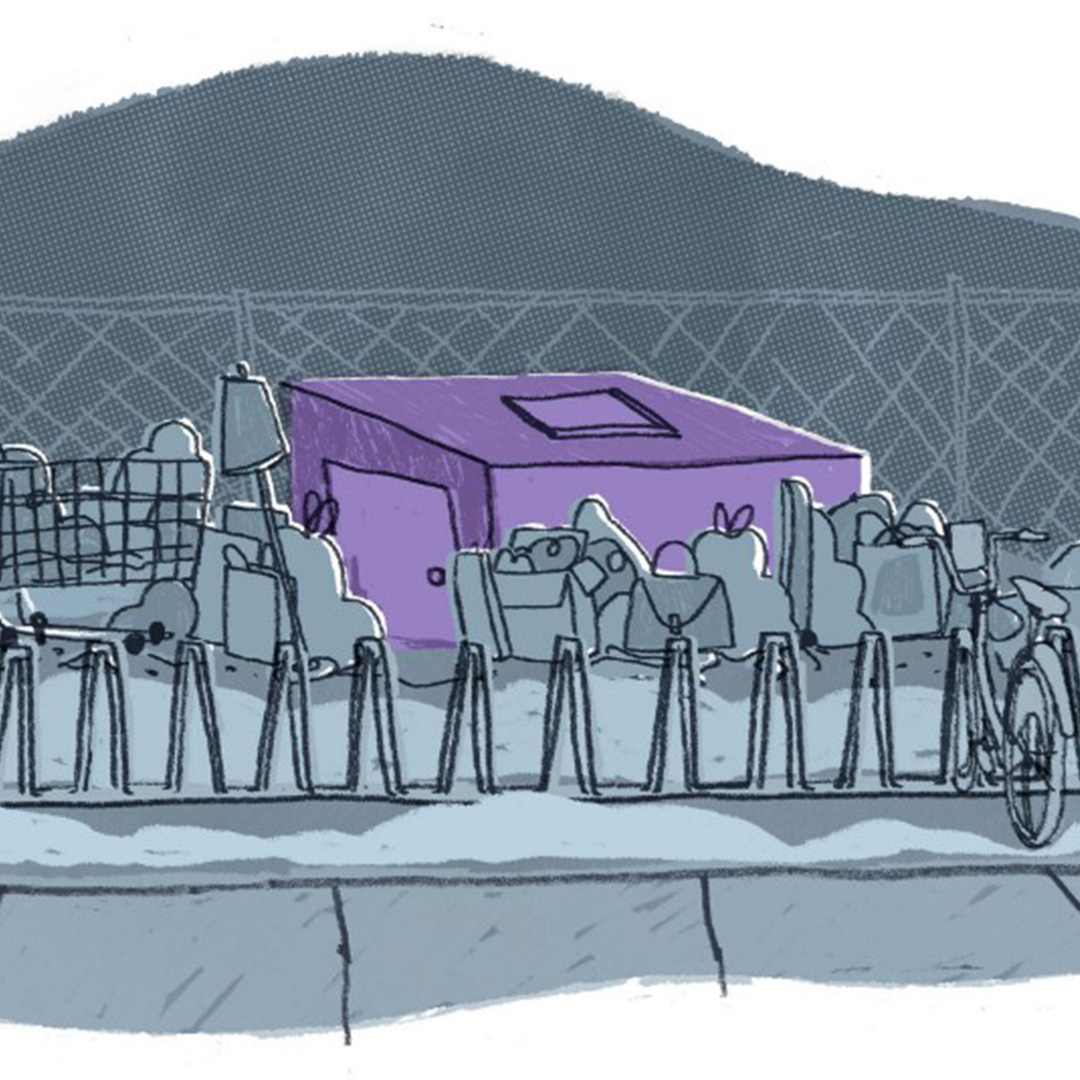
I first saw the woman I’ll call Anna early last summer. Tucked in behind a payphone under a rigged plastic sheet in Parkdale, it was easy to miss her. She was dressed in random, eclectic layers, sitting among a pile of suitcases, carts, clothes, and sleeping bags. She spoke in a rolling Caribbean accent and might have been in her 40s, though it was hard to tell.
As the summer went by, her encampment began to spread and grow. Items came and went mysteriously. She didn’t move from her spot during the day, but somehow each morning there would be new items. A lamp arrived one day, a bicycle the next. Eventually her little mountain of possessions spread over a couple of sidewalk squares.
It’s not the kind of thing that would be allowed in most neighbourhoods, but this is Parkdale. There is space for the marginal. In a country with the landmass of Canada, it makes sense that there is one square kilometre for those with nothing. The nearest property was a rental that had been emptied of long-term residents and handed over to Airbnb visitors, so no one seemed to mind. She became just another person living in the neighbourhood.
A couple of years before, I had taken a single room in a house down the street. The loss of a job in the Great Recession plus some long-simmering personal issues had knocked me down a rung on the Toronto housing ladder. No longer able to afford a regular apartment, I moved into rooming houses.
I quickly found that some are worse than others. I was booted out of an illegal building in Kensington market when inspectors began cracking down in the wake of a fatal fire. In Parkdale, however, I had found a space in one of the better rooming houses. The owner didn’t live far away and took care of things. The fire department stopped by yearly to test the alarms. Stereotypically home to ex-cons, the mentally ill, and addicts, this rooming house had attracted a couple of millennials who couldn’t afford the Toronto housing market.
Sure, there were bugs if you weren’t clean and the halls were painted that institutional lime green, but it was a place to live that’s not on the street and a community as well. A woman in her 60s living upstairs who had fled an abusive relationship in Winnipeg told me she liked living among other people. She didn’t worry she would fall and no one would hear her. There was always someone around to carry her groceries up the stairs. Settling into bed on cold nights, I gave thanks that there was a roof over my head. Thank goodness I wasn’t living on the sidewalk down the street like Anna.
In Parkdale, locals recognize one another and are quick to talk. People on the margins don’t always have close friends or family, and so social boundaries become less rigid. Where the average middle-class Torontonian is distant to strangers and open to friends and family, that dynamic reverses itself somewhat among local Parkdalians. Going about my daily errands, I ended up walking past Anna several times a day. And so we began talking.
It turned out she was perfectly lucid and rational, which was a surprise, but maybe shouldn’t have been. Over the summer, other locals stopped to talk with her, bringing her coffee or Tibetan momos from the restaurant across the street. Rummaging around in her junk one day she pulled out a mess of wires from the precise spot she had been storing her rechargeable CD player.
“Hey, can you charge it up?”
“Sure,” I said.
“Are you going to the store?” she asked another day.
“Yeah. What do you want?”
“Salt and vinegar chips,” she said. She was just another resident in the urban village of Parkdale.
And then fall arrived. It started getting colder. Anna had an Olympian strength and resiliency and seemed to handle any type of weather, from the beating sun of July to pouring rain. As fall turned to winter, she remained in her spot, wrapped in ever growing layers of clothes and blankets. As the temperature dropped into negative territory, however, I began to worry. Eventually, I asked if she wanted to go to a shelter. It seemed an obvious choice as the snow began to fall. “No,” she said. “I’d rather stay outside.” When I pressed her, she turned the question on me. “Have you ever tried to stay in a shelter?” she asked. I hadn’t. Point taken.
Of course, people living on the streets experience scary health outcomes. Last year 94 homeless people died in Toronto. A 2013 study from the Centre for Urban Health Solutions at St. Michael’s Hospital found that the homeless use the emergency room eight times more often than the population at large. But living in the shelter system can bring a different set of health challenges.
Those who have dealt with vulnerable populations know that the problems around homelessness can seem intractable. Addictions, mental illness, and the simple daily stress of living in desperate conditions can create tension. Crowding too many people together in a shelter creates new problems. Shelters can be violent. They can host outbreaks of influenza. Your stuff gets stolen. You get bitten by bed bugs.
This year, the extreme cold sent more people than ever into a shelter system that was already bumping up against capacity. Early this winter, the Toronto Star began reporting on an influenza outbreak at Seaton House, the single largest shelter in the city. Almost a quarter of the older residents staying on the long-term floor were sick. The outbreak followed one last November in which 67 were infected during a strep outbreak that lasted 19 months. With the shelters running at 95 percent occupancy, viruses were spreading through the population. Anna’s decision to stay outside under her pile of stuff didn’t seem so crazy.
In a country with the landmass of Canada, it makes sense that there is one square kilometre for those with nothing.
But by late December, the lows were hitting negative double digits. Arctic air was pouring down from the north. Shuffling by on the way to the streetcar, I would offer Anna a quick wave as I hustled past. At night, under the blankets, I wondered how she could handle the cold. How long must that night seem to someone sleeping on the street?
By this time, a 24-hour woman-only drop-in had been set up around the corner on Cowan Avenue. Homeless advocates and street nurses had pressured the city into opening up extra shelter space. A police car would often roll up to check on Anna’s condition. Workers from the local social services organization, PARC, would also stop by her encampment to check-in on her.
Thankfully, early in January, as yet another wave of frigid weather arrived, she finally seemed to have had enough. Anna relented and went to a shelter. Walking by her camp a week after she had been picked up, however, I was astounded to see her back.
“What are you doing back here?” I asked.
“They don’t want to deal with me,” she said.
This time, buried under the huge mound of stuff, Anna seemed more withdrawn. The sense of humour, clearly evident in the summer, was gone. As the extreme cold temperatures stuck around, one day she asked if she could come back to my place. “No,” I said. The superintendent wouldn’t have it. And sneaking her into the shed at the back of the property would have put my own hard-won, beloved space at risk. I shuffled on with a twinge of guilt.
It was around this time that an unidentified local hero provided an unexpected answer: a wooden cubicle-like box that appeared one morning. About twelve feet long and three feet high, it was painted purple with a window built into the top. It was a small, single-person shelter — someplace to go in the middle of the night during the coldest weather.
It stayed there between Anna’s encampment and the fence behind her, a tiny purple hut on the side of the street. It wasn’t clear who had built it. Several organizations, when contacted, said they didn’t know. If you walked by in the morning, the little door would be closed, keeping Anna out of the snow and wind. It was tiny, unlicensed, presumably against some bylaw, and no way for a person to live long-term. But it was a last resort. Again, most neighbourhoods would not allow it. But it worked in Parkdale. At least somebody was doing something while city officials dithered over shelter space.
But as another period of intense cold settled in, it became clear that something more substantial was needed. Anna was taken in and her encampment was torn down. The hut disappeared. As the mountain of stuff was levelled, the tragic elements of her story became clearer. There was food marbled through the layers of decaying possessions. The shelter had been there on the coldest nights, but it could only ever be a temporary option. Anna needed more help than this.
In the weeks after, as the patch of sidewalk returned to the way it was before Anna had taken up residence, news reports confirmed that one of the men taken out of Seaton House had died. Staff who dealt directly with sick residents were advised to wear masks and goggles. And those who stayed outside in the cold, rather than in the shelters, continued to pull off that unrecognized Olympian feat of human endurance. Thank you to whoever built that purple shelter. At least someone was doing something about the city’s housing crisis, however small, in this cold winter of 2018.

